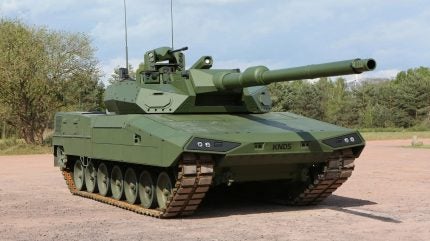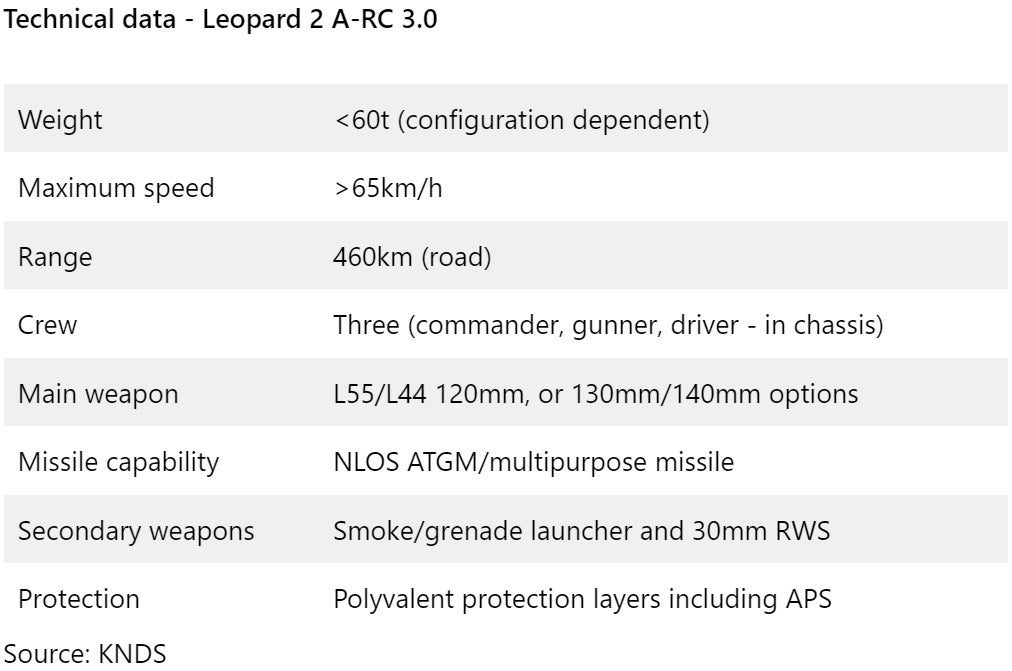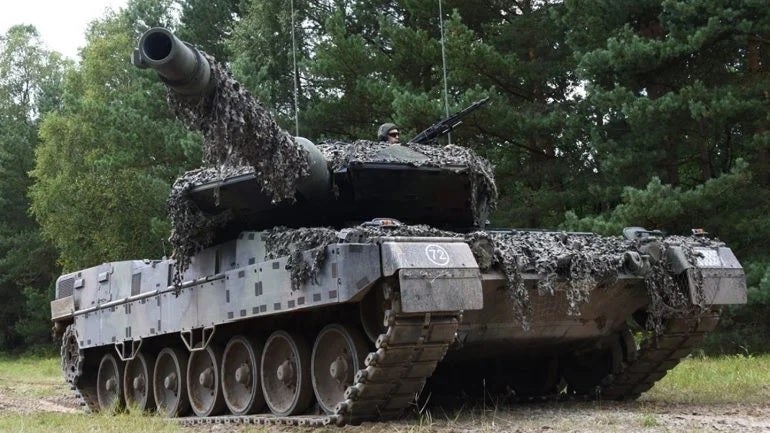
The unexpected leak of KNDS’ new Leopard 2 A-RC 3.0 concept, intended to be showcased at the Eurosatory trade show, sent tank aficionados on social media aflame, with the platform exhibiting a range of kinetic, technological, and protective capabilities.
This included the potential to equip larger 130mm or 140mm main guns, compared to the 120mm standard across most Nato militaries, a reduced three-person crew situated inside the vehicle’s hull, with the turret itself being automated.
In a 13 June 2024, release issued at the leak, KNDS stated that the Leopard 2 A-RC 3.0 was also “augmented” by an anti-tank guided missile capability that enables beyond-line-of-sight targets to be engaged while on the move.
The concept also had passive and reactive armour, as well as being “backwards compatible”, meaning that any Leopard 2 variant currently in service, according to KNDS, would be able to be upgrade to the new Leopard 2 A-RC 3.0.
Conceptually, the platform bears similarities in its approach to the upgrade path being taken by the British Army with its Challenger 3 project, albeit from a starting point at least half-a-generation further on.

As with Challenger 3, the Leopard 2 A-RC 3.0 concept would replace the Leopard 2 turret, adding in new sensors and main gun, but unlike the British Army’s future tank sees the automation of the turret, as is seen with Russia’s T-14 Armata. Active protection too, is added, as with the British Army’s Challenger 3.
KNDS said the Leopard 2 A-RC 3.0 is pitched as a direct path towards the future European Main Ground Combat System, or MGCS, which is France and Germany’s ongoing effort to develop a next-generation main battle tank (MBT) for European militaries.
“KNDS assesses the Leopard 2 A-RC 3.0 not only as a bridge solution until introduction of the next-generation land combat system MGCS, but also as a decisive technological precursor to MGCS,” KNDS said in its 13 June statement.
Alternatively, The platform could be more of a European version of the US Abrams X concept, unveiled at AUSA in 2022 by General Dynamics Land Systems as a potential pathway the US Army could take in any Abrams M1A2 SEP v3 MBT replacement.
Does Europe need a Leopard 2 A-RC 3.0?
Posting on social media platform X in the wake of the disclosure of the Leopard 2 A-RC 3.0 concept, Nicholas Drummond, UK advisor to KNDS, stated that the platform was a “bridge” between Leopard 2 and the MGCS.
“To all those who say the tank is dead, this is KNDS’s response,” Drummond posted.
Notably, the Leopard 2 A-RC 3.0 is designed with an autoloader system, enabling ammunition to be loaded into the main gun for use without the direct input from the crew. KNDS data indicates the ability to fire three rounds in 10 seconds.
However, the autoloader, effectively a magazine, would need reloading at some point in the operational process.
Automated turret technology has predominantly been the purview of Russian MBTs, as with the Armata, with the US maintaining concerns that such technology was more prone to catastrophic explosions and total crew fatalities, which has been observed in poorly maintained Russian tanks in Ukraine.
It is unclear how the crew of the A-RC Leopard would be able to conduct manual firings or rectify any issues with the main gun during combat operations if they are ensconced in a protective shell in the vehicle’s hull.

Further, with production of Leopard 2A8 MBTs ongoing, it is uncertain how much appetite there is for such a platform, with precious resources committed to bringing capabilities into service quickly, rather than waiting for the realisation of what could be a lengthy upgrade process.
It is not known how long a retrofit of a Leopard 2 up to the A-RC 3.0 standard, but the programme to upgrade the British Army’s Challenger 2 to the Challenger 3 standard is many years in the making and will not yield an operational capability until 2027 at the earliest.
Much like the Abrams X, the Leopard 2 A-RC 3.0 could well effectively assume the role of a capability demonstrator, a concept of the sort of technologies that could be fitted to a future MGCS.



